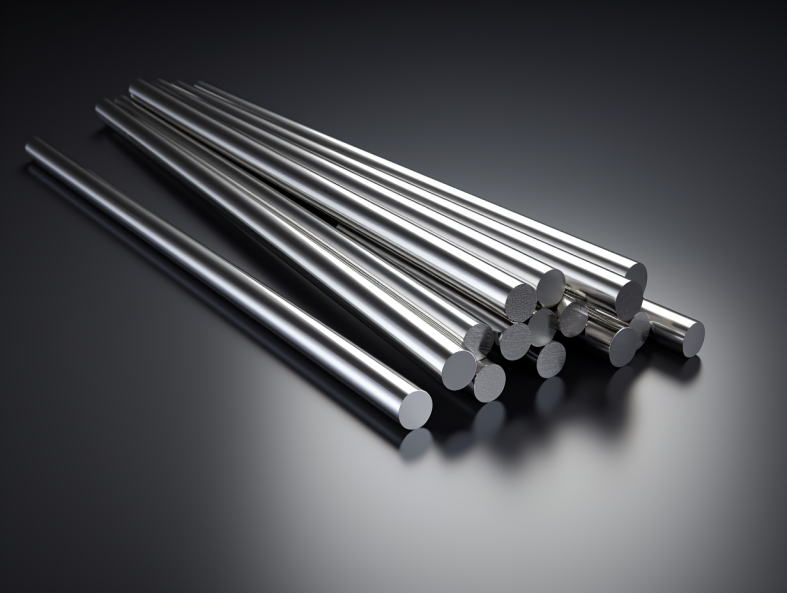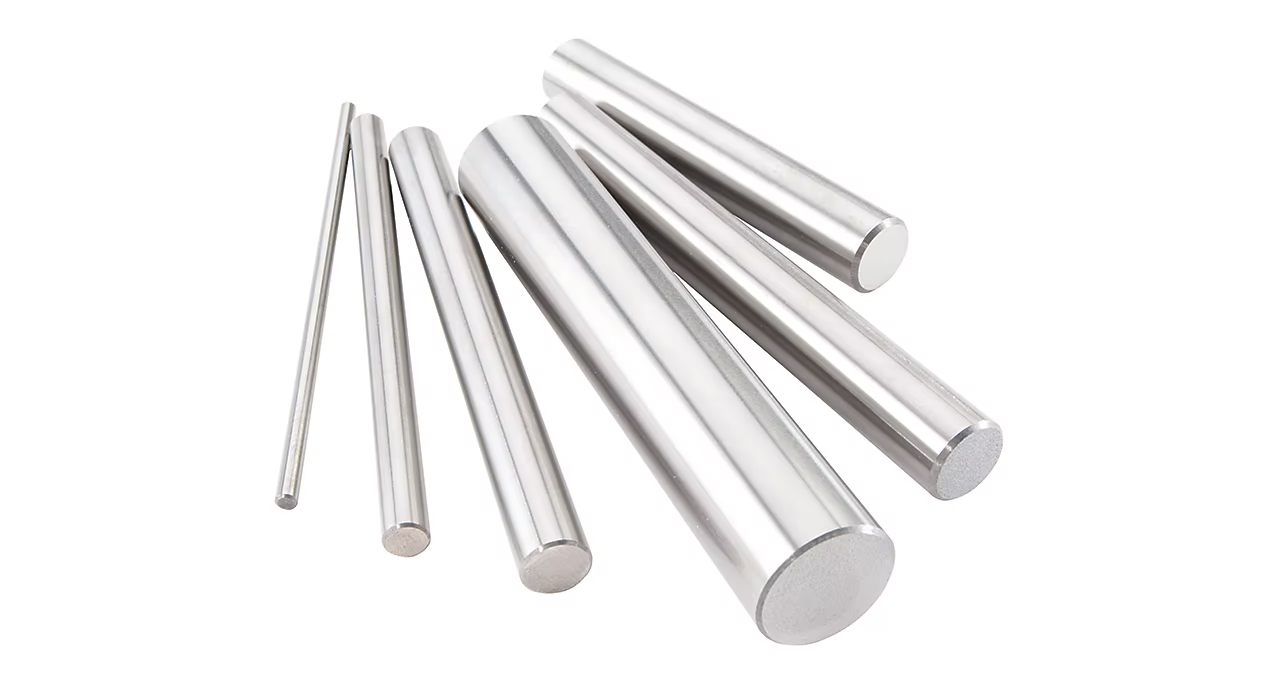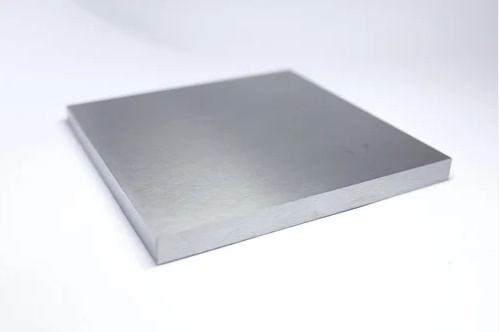はじめに過酷な環境で活躍するヒーローたち
過酷な化学薬品、研磨材、極端な温度が当たり前の業界では、従来の素材では勝ち目がありません。耐腐食性 カーバイド管 タングステンカーバイトブランクスは、最も過酷な課題に耐え、妥協のない性能を発揮するために設計された、縁の下の力持ちです。炭化タングステンから作られたこれらの特殊な材料は、卓越した硬度、耐摩耗性、耐食性を備えており、幅広い重要な用途に不可欠です。
耐食性超硬チューブブランクとは?
耐久性のある管状部品の基礎
耐食性カーバイド・チューブ・ブランクは、基本的に半完成品のチューブ状部品で、通常は円筒形をしており、超硬合金として知られる複合材料から製造される。超硬合金は、単にカーバイドと呼ばれることも多いが、非常に硬い炭化タングステン粒子(WC)を金属バインダー(通常はコバルト(Co))で結合した複合材料である。超硬合金のユニークな特性は、これら2つの成分の相乗的な組み合わせから生まれます:
- 炭化タングステン(WC): 卓越した硬度、耐摩耗性、高温強度を提供。
- コバルト・バインダー(Co): 靭性を与え、超硬合金が衝撃や衝撃荷重に耐えられるようにする。

耐食性超硬チューブ・ブランクはどのように作られるのか?
パウダーからプレシジョンへ:多段階プロセス
耐食性超硬チューブブランクの製造には、慎重に管理された一連の工程が含まれる:
- パウダーの調製: 微粉末の炭化タングステンとコバルトを特定の比率で精密にブレンドし、所望の特性を実現する。
- 成形する: 配合された粉末は、プレスと呼ばれる工程を経て、目的の形状に圧縮される。例えばTRUERでは、先進的な電動ダイレクトドライブ自動プレスを採用し、成形工程における高い精度と安定性を実現している。
- 焼結: プレスされたブランクは、制御された雰囲気炉で高温にさらされる。焼結と呼ばれるこの工程により、炭化物粒子が融合し、強固で高密度の素材が出来上がる。
- 仕上げ: 焼結後、ブランクは研削、ホーニング、研磨などのさまざまな仕上げ加工を経て、必要な寸法、表面仕上げ、公差を達成する。
耐食性超硬チューブブランク材:詳しく見る
表1:TRUERの耐食性超硬管ブランクの特性を明らかにする
| プロパティ | 代表値 | 説明 |
|---|---|---|
| 密度 (g/cm³) | 14.2 – 14.8 | 高密度は、材料の耐摩耗性と高圧に耐える能力に貢献している。 |
| 硬度(HRA) | 88 – 92 | 卓越した硬度により、ブランクは摩耗に強く、過酷な条件下でも形状を維持する。 |
| 横方向の破断強度 (N/mm²) | 1800 – 2200 | 材料が破断することなく曲げ力に耐える能力を測定する。 |
| 圧縮強度 (N/mm²) | 5500 – 6500 | 圧縮荷重下での材料の変形に対する抵抗力を示す。 |
| 熱膨張係数 (10-⁶/K) | 4.9 – 5.5 | 温度変化による材料の膨張や収縮の程度を表す。 |
| 耐食性 | 素晴らしい | 広範囲の腐食性化学薬品、酸、アルカリに高い耐性がある。 |
注: 具体的な特性は、正確なカーバイド・グレードと製造工程によって異なる場合があります。
用途耐久性と性能の融合
耐食性超硬チューブブランクは、要求の厳しい産業で使用されるさまざまなコンポーネントの基礎となります:
- 石油・ガス 腐食性環境で使用されるノズル、スリーブ、バルブ、その他のダウンホールツール。
- 化学処理: ポンプ、バルブ、シール、反応器部品など、腐食性の強い化学物質を扱うもの。
- 鉱業と建設: 摩耗や衝撃を受けるドリルビット、切削工具、摩耗部品、構造部品。
- 航空宇宙 エンジン部品、着陸装置部品、その他高い強度と耐摩耗性を必要とする重要部品。
- メディカルだ: 生体適合性と耐食性が要求される手術器具、インプラント、その他の医療機器。
サプライヤーの比較:カーバイドの展望
表2:耐食性超硬チューブブランクサプライヤーの比較分析
| サプライヤー | 所在地 | 価格帯(1個あたり、米ドル、概算) | 特産品 |
|---|---|---|---|
| ケナメタル | アメリカ | $50 – $500+ | 幅広い超硬グレードとサイズ、カスタムソリューション |
| サンドビック・コロマント | スウェーデン | $60 – $650+ | 高性能グレードと特殊形状に注力 |
| エレメント・シックス | イギリス, グローバル | $75 – $800+ | 多結晶ダイヤモンド(PCD)を含む先端材料の専門知識 |
| セラチジット | ルクセンブルク | $45 – $480+ | 幅広い超硬製品ポートフォリオ、競争力のある価格設定 |
| TRUER | 中国 | $35 – $400+ | 高品質のブランク、競争力のある価格、迅速なリードタイムに特化 |
注: 価格は非常に変動しやすく、ブランクのサイズ、素材のグレード、数量、その他の要因によって異なる。
利点と限界:トレードオフを天秤にかける
表3 耐食性超硬チューブブランクスのバランスのとれた展望
| メリット | 制限事項 |
|---|---|
| 卓越した硬度と耐摩耗性: 研磨用途や高摩耗用途では、他のほとんどの素材よりも優れている。 | 脆い性質: 衝撃や衝撃荷重が加わると、欠けやひび割れが発生する可能性がある。 |
| 高い耐食性: 幅広い腐食性化学物質や環境に耐える。 | コストだ: 代替素材に比べ初期コストが高い。 |
| 高温強度: 高温下でも強度と安定性を維持。 | 機械加工の課題: 機械加工と仕上げには特殊な工具と専門知識が必要。 |
| 長寿命: 長寿命により、ダウンタイムと交換コストを削減。 | 設計上の考慮事項: 素材のもろさに対応するためには、慎重な設計が欠かせない。 |
基本を超える:カーバイドの興味深い事実
- カーバイドの起源 炭化タングステンが最初に合成されたのは18世紀だが、工業的に広く使われるようになったのは20世紀初頭のことである。
- モース硬度: 炭化タングステンはモース硬度8.5~9を誇り、ダイヤモンドに次ぐ硬度を誇る。
- カーバイドのリサイクル タングステンの価値により、カーバイドは非常にリサイクル可能な材料です。リサイクル工程では、再利用のために炭化タングステンとコバルトバインダーの両方を回収することができます。
よくある質問よくある質問
1.超硬合金はどのような腐食に耐えるのか?
カーバイドは、酸(硫酸、塩酸など)、アルカリ(水酸化ナトリウムなど)、塩溶液、多くの有機溶剤など、幅広い腐食剤に対して優れた耐性を示す。
2.超硬合金は高圧用途に使用できますか?
そう、超硬合金は密度と圧縮強度が高いため、石油・ガスや化学処理産業などの高圧用途に適しているのだ。
3.超硬材種を選択する際に考慮すべき重要な要素とは?
主な要因には、耐摩耗性、耐食性、靭性、コストな ど、特定の用途の要件が含まれる。超硬サプライヤーや工具の専門家に相談することをお勧めします。
4.自分の用途に超硬合金が適しているかどうかは、どうすればわかりますか?
腐食剤、研磨材、高温、極端な圧力の存在など、使用環境を考慮してください。これらの要因が存在する場合は、超硬合金が理想的な選択となる場合があります。
5.超硬チューブブランクの一般的なリードタイムを教えてください。
リードタイムは、サプライヤー、ブランクサイズ、材料グレード、数量によって大きく異なります。しかしTRUERは、お客様の厳しい生産スケジュールに対応するため、競争力のあるリードタイムを提供できることを誇りとしています。




